Media | Articles
1974 Buick Apollo: Nova? No

In 1962 Chevrolet debuted a conventional compact to accompany the innovative Corvair, hoping to lure Falcon and Valiant shoppers over to The General. The resulting cadre of X-bodies was a success from day one. Today, we’ll be looking at a particularly original example of the Buick variant: the Apollo.
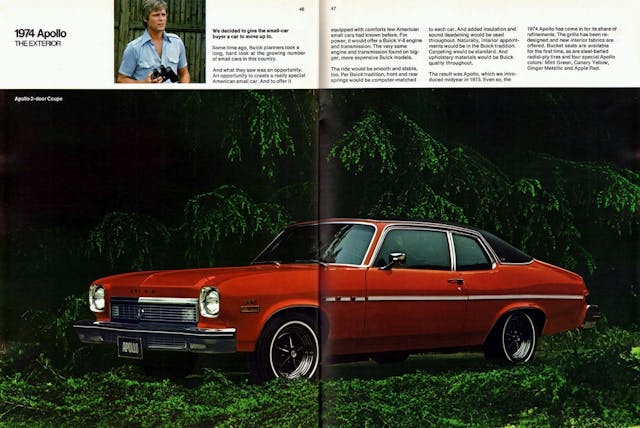
In 1968 the third-generation Chevy II/Nova appeared, and its pleasing Coke-bottle lines aped the also-restyled 1968 Chevelle/Malibu. It carried on for several model years with only the mildest of cosmetic updates. In mid-1971, a corporate cousin was finally added. The Pontiac Ventura II was essentially a Pontiac Nova, but it sported a more strongly Pontiac-appearing nose and tail. Then, in 1973, both Oldsmobile and Buick got X-body variants of their own. Oldsmobile’s version was dubbed the Omega; Buick’s, the Apollo.

As a Buick, the Apollo was naturally the nicest of all the X-bodies. Ads usually featured a coupe or hatchback coupe in bright, eye-catching colors with Rally wheels, whitewalls, and vinyl roof. A four-door sedan rounded out the three-model lineup. Six-cylinder and V-8 versions were considered separate models. Six-cylinder Apollos made do with Chevy’s 100-hp inline-six, but the V-8 was a genuine Buick engine: in this case, the 150-hp 350.
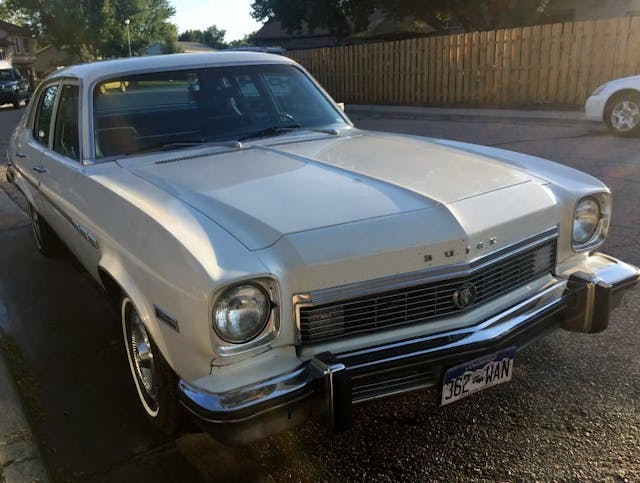
The 1973 Apollo was a mid-year model introduced on April 12, 1973. A total of 8450 sedans, 14,475 coupes, and 9868 hatchbacks were sold. 1974 models were only slightly updated; the most noticeable difference was a grille revised to feature vertical bars.
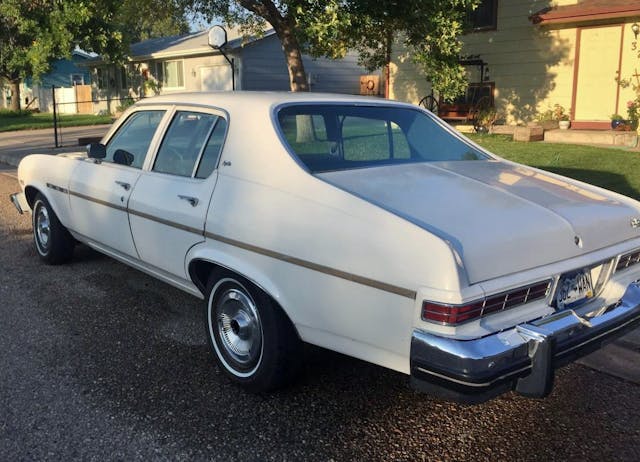
Brochures and period advertising emphasized that, though the Apollo was a compact, it was still a Buick. Company literature trumpeted the available extras: the V-8, sport mirrors, power brakes, bucket seats, sport steering wheel, road wheels, steel-belted radial tires, and Rallye suspension.
Marketplace
Buy and sell classics with confidence

All 1974 Buicks were formally introduced on September 27, 1973. As before, the Apollo came in coupe, hatchback coupe, and sedan body styles. Sedans like our featured car had a base price of $3069 with the Chevy six and $3184 with the base 350 V-8. 16,779 were sold, plus 28,286 coupes and 11,644 hatchbacks.

This was the final year for the 1968 body shell. Starting in 1975, the Apollo—along with its Olds, Pontiac, and Chevy cousins—would get all-new sheetmetal with a more “important-looking” appearance.

Also in ’75, Buick decided that only the four-door sedan would be called the Apollo, and the coupe and hatchback were dubbed Skylarks. As of 1976, all compact Buicks became Skylarks and the Apollo name disappeared, never to return.
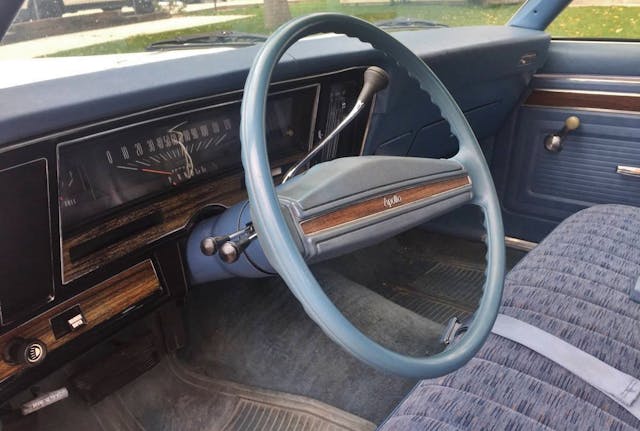
This white example was spotted by your author recently. I have never seen a 1973–74 Apollo in person and was impressed with this car’s apparent originality. At the time, it was listed on Craigslist in Fort Collins, Colorado. According to the ad, it is equipped with the 250-cu-in Chevy six. It also had recently received reupholstered seats, new tires, starter, fuel pump, water pump, and radiator.
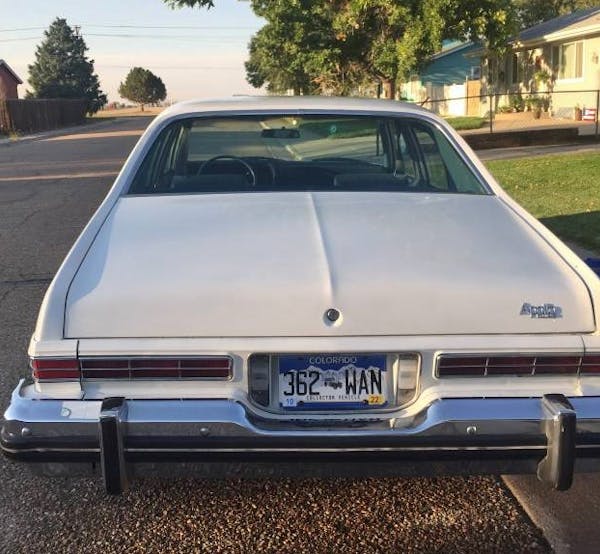
As the seller states: “The first owner had the car garaged for 43 years, never left the state and never drove it on long trips. I have owned the car for two years and have it garaged also. My wife and I are missionaries overseas and do not need it to just be sitting here in the States.”

With a $3500 ask, it looks like a fun car to tinker around with and enjoy. Hopefully someone rescues it and enjoys it. Simply explaining to people that it isn’t a Nova could be highly entertaining!
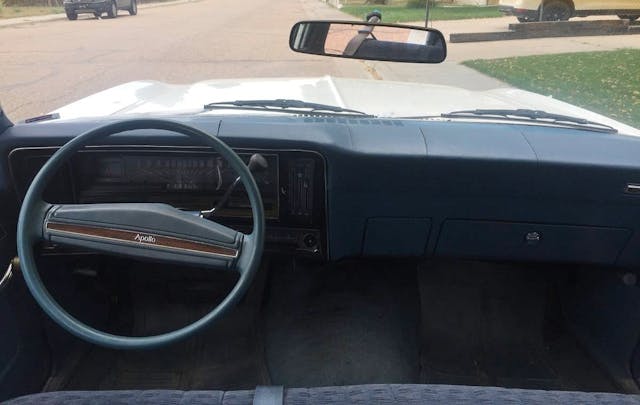














I have one same color bigger tires and a 502 crate and hood rear facing scoop, does bring the eyes to it ,